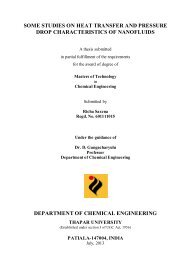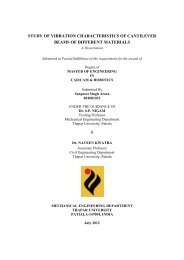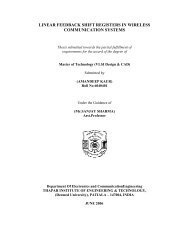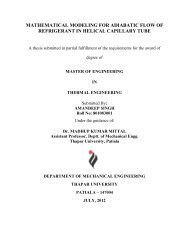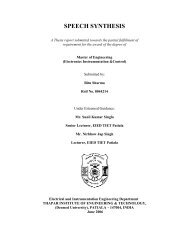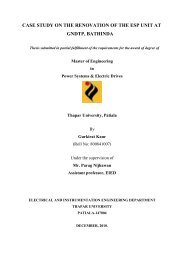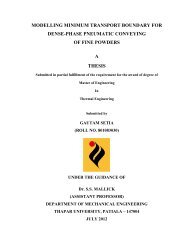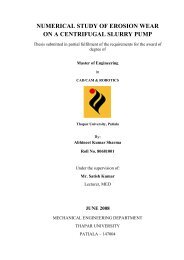from indigenous fermented foods and human gut ... - Thapar University
from indigenous fermented foods and human gut ... - Thapar University
from indigenous fermented foods and human gut ... - Thapar University
You also want an ePaper? Increase the reach of your titles
YUMPU automatically turns print PDFs into web optimized ePapers that Google loves.
Table 2.4. Requirements of probiotics (Salminen <strong>and</strong> von Wright, 1998)<br />
26<br />
Chapter II Review of Literature<br />
� Proliferation <strong>and</strong>/or colonisation on the location where it is active<br />
� No immune reaction against the probiotic strain<br />
� No pathogenic, toxic, allergic, mutagenic or carcinogenic reaction by the probiotic<br />
strain itself, its fermentation products or its cell components after decrease of the<br />
bacteria<br />
� Genetically stable, no plasmid transfer<br />
� Easy <strong>and</strong> reproducible production<br />
� Viable during processing <strong>and</strong> storage<br />
� Survival of the environmental conditions on the location where it must be active<br />
2.3.2.1 Viability of probiotic organisms<br />
Microorganisms introduced orally have to at least transiently survive in the stomach<br />
<strong>and</strong> small intestine. Although this appears to be a rather minimal requirement, many bacteria<br />
including the yoghurt-producing bacteria L. delbrueckii subsp. bulgaricus <strong>and</strong> S.<br />
thermophilus often do not survive to reach the lower small intestine. The reason for this<br />
appears to be low pH of the stomach. In fasting individuals, the pH of the stomach is between<br />
1.0 <strong>and</strong> 2.0 <strong>and</strong> most microorganisms, including lactobacilli, can only survive <strong>from</strong> 30<br />
seconds to several minutes under these conditions. Therefore, in order for a probiotic to be<br />
effective, even the selection of strains that can survive in acid at pH 3.0 for sometime would<br />
have to be introduced in a buffered system such as milk, yoghurt or other food.<br />
2.3.2.2 Acid <strong>and</strong> bile tolerance<br />
One of the most important criteria for selection of probiotic organisms is their ability<br />
to survive in the acidic environment of the product <strong>and</strong> in the stomach, where the pH can<br />
reach as low as 1.5. Similarly, the organisms must be able to survive in the bile<br />
concentrations encountered in the intestine. Lankaputhra <strong>and</strong> Shah (1995) showed that,<br />
among several strains of L. acidophilus <strong>and</strong> Bifidobacterium sp. studied, only a few strains



